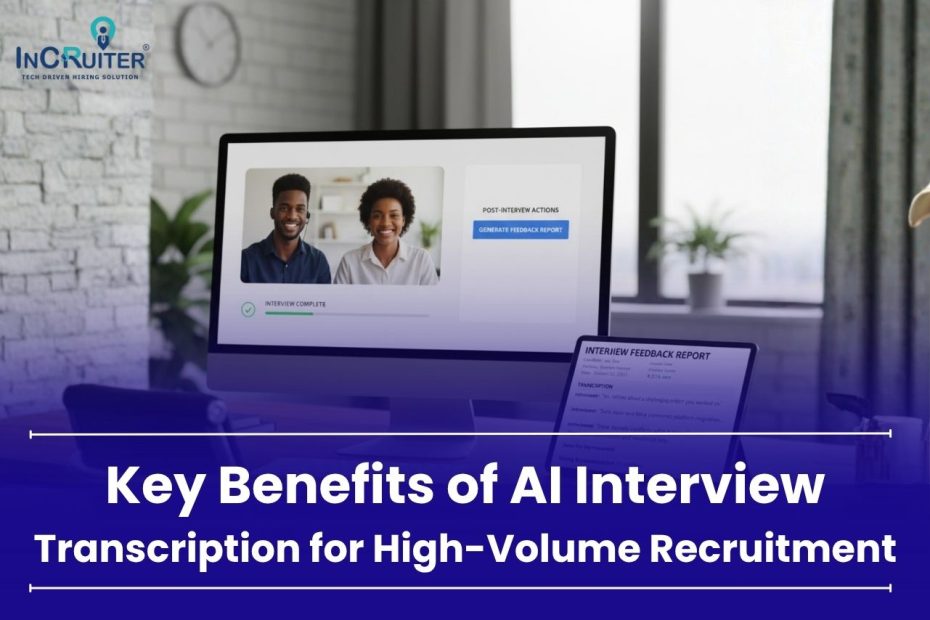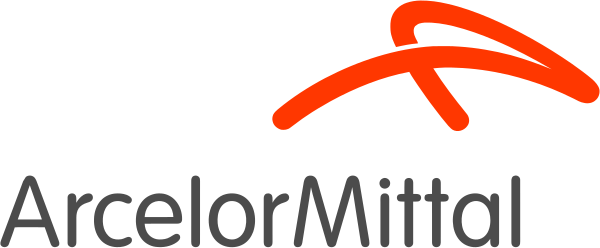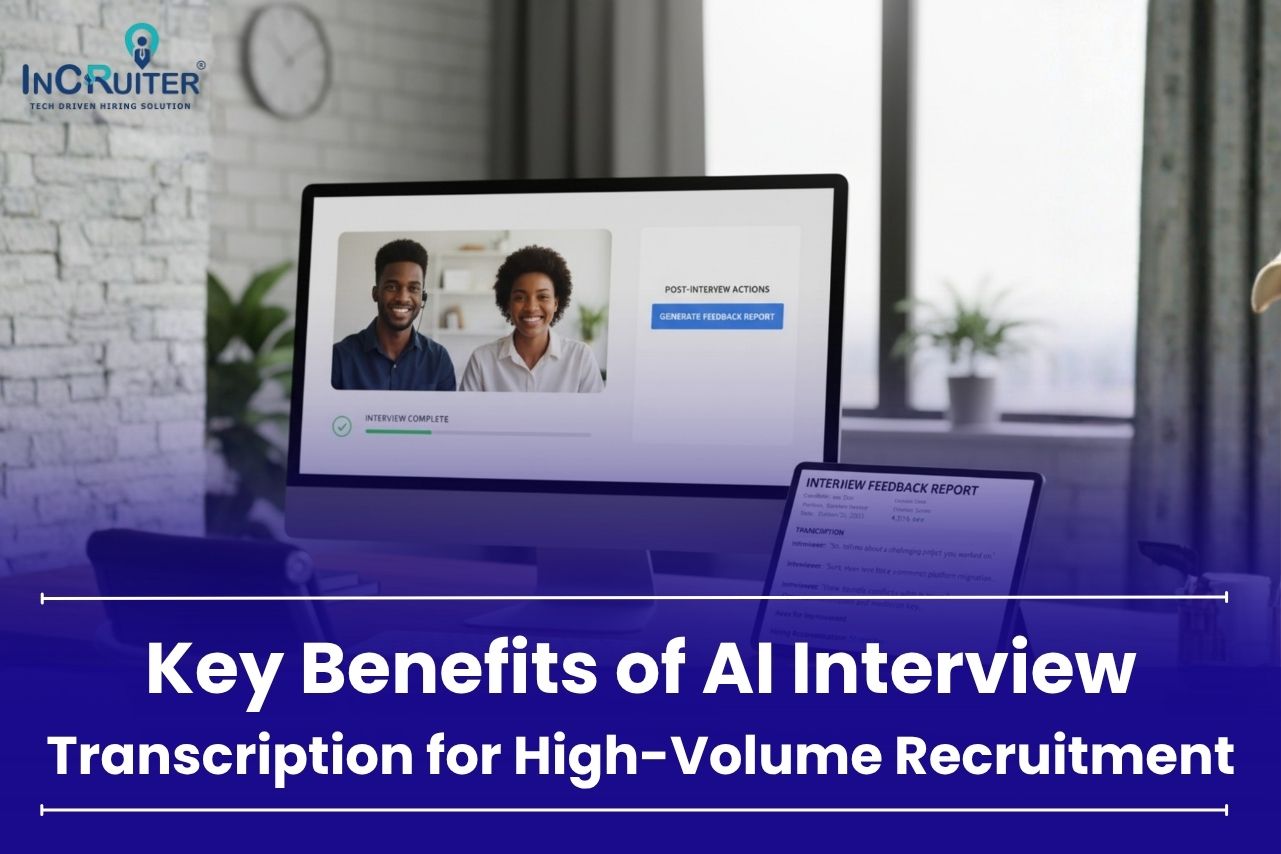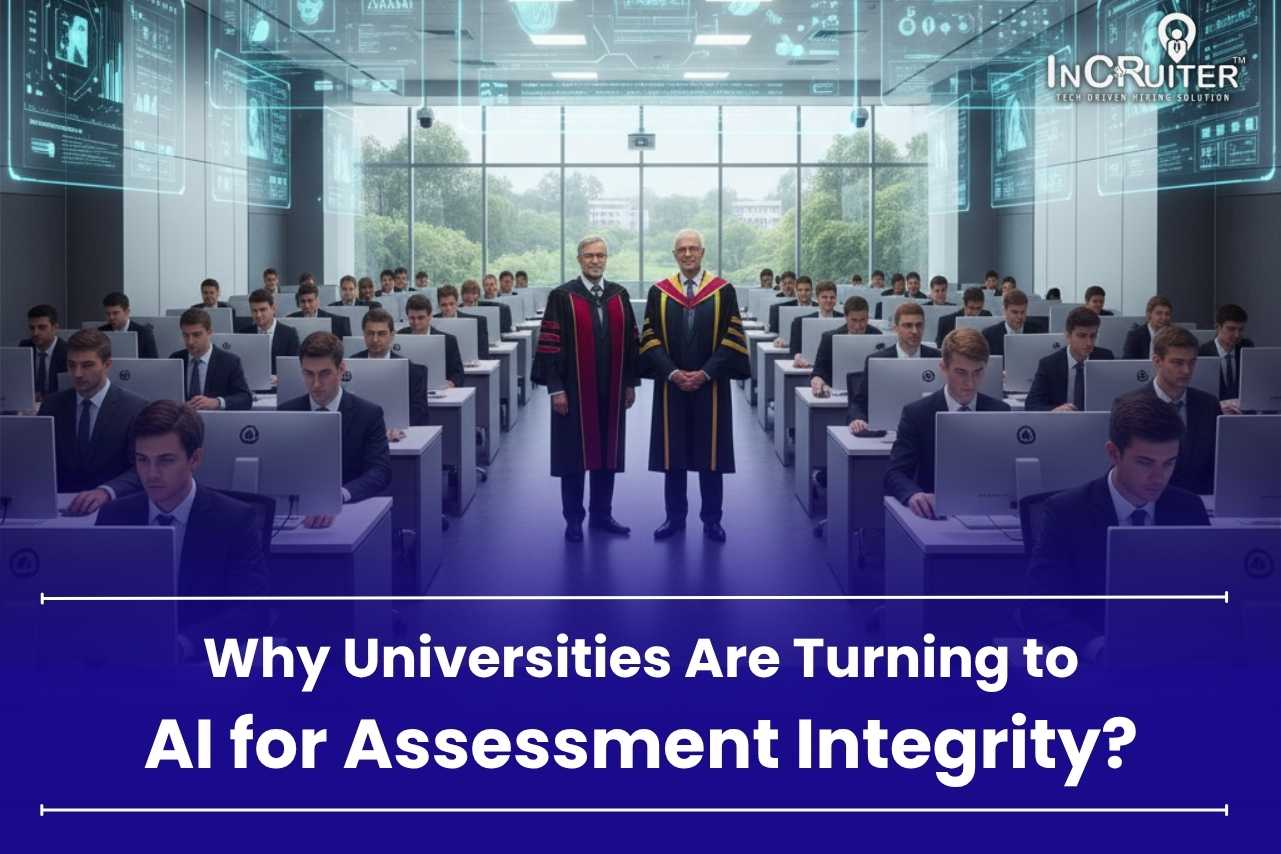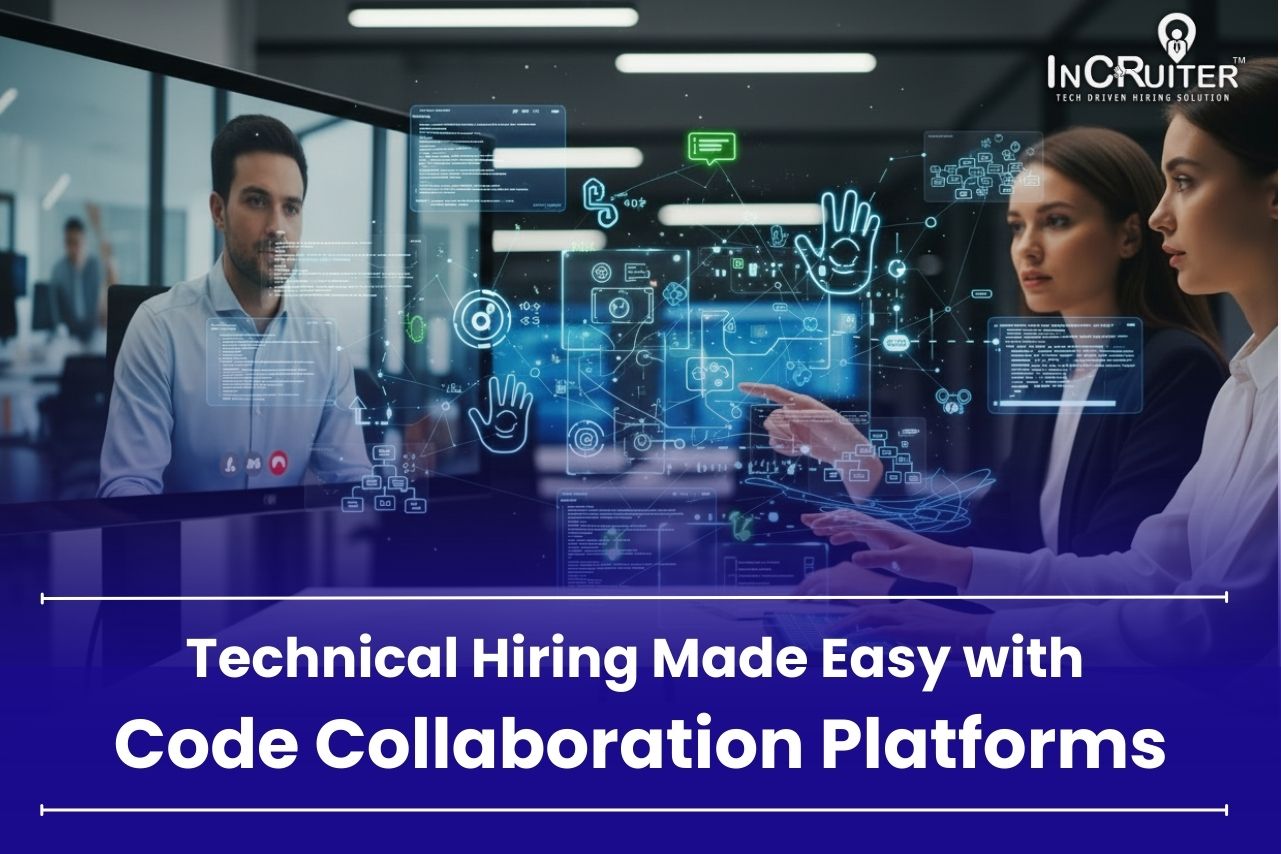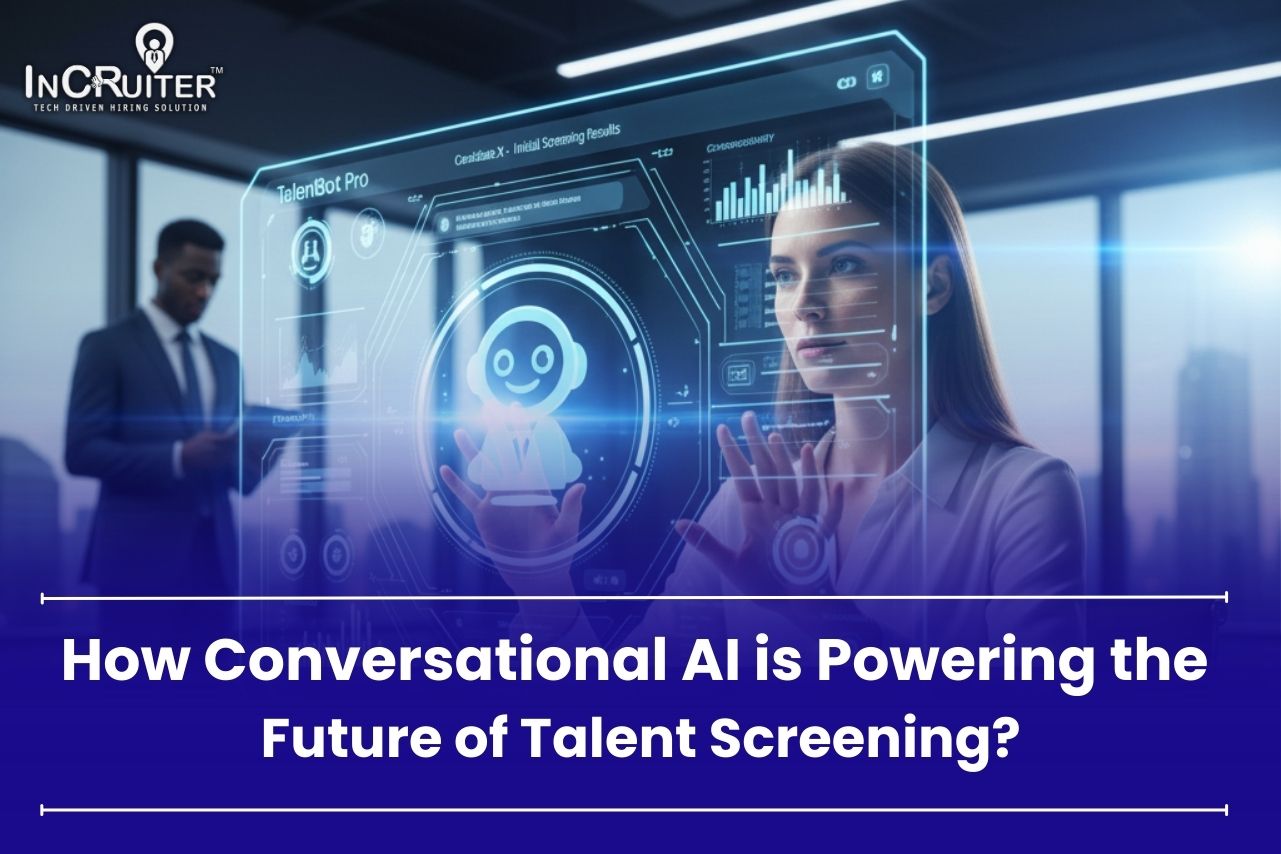Every recruiter faces the same impossible challenge: engage meaningfully with candidates while capturing every critical detail they share. This fundamental tension undermines both objectives, creating superficial conversations and incomplete documentation that stalls hiring decisions for weeks. In high volume environments, these minor inefficiencies multiply into competitive disasters as top talent accepts faster offers elsewhere. AI interview transcription resolves this conflict entirely.
By automatically capturing complete conversations with exceptional accuracy, the technology frees recruiters to maintain genuine presence while building comprehensive, searchable records instantly. Leading organizations now recognize that transcription delivers five transformative advantages that fundamentally reshape recruitment efficiency, compliance, and talent outcomes across competitive markets.
Why Traditional Interview Documentation Fails at Scale?
Recruitment teams managing 50+ weekly interviews confront a structural problem: human interviewers cannot simultaneously engage candidates and document responses effectively. This dual requirement compromises conversation depth and record quality equally.
The mathematics of inefficiency become stark quickly. Consider a recruiter spending just 10-15 additional minutes per interview organizing scattered notes. Across 50 weekly candidates, that represents 9 lost hours dedicated purely to administrative cleanup rather than strategic hiring activities.
Manual documentation produces inconsistent records that vary by interviewer memory and note taking style. Video review consumes excessive time without delivering searchable insights. Human recall deteriorates rapidly, proving unreliable for precise technical details or nuanced candidate responses weeks later.
AI interview transcription engine perfectly addresses this limitation systematically. The technology delivers accurate, searchable documentation that scales effortlessly from dozens to hundreds of monthly interviews. For organizations expanding aggressively, transcription has transitioned from convenient enhancement to essential recruitment infrastructure that enables growth without proportional hiring team expansion.
The 5 Game-Changing Benefits of AI Interview Transcription
1. Eliminates Manual Note-Taking and Restores Authentic Engagement
Interviewers attempting to conduct conversations while documenting responses compromise both activities simultaneously. The cognitive load of processing answers, formulating follow-up questions, and capturing notes creates fragmented interactions that candidates perceive as disengaged or transactional.
AI transcription removes this impossible balance entirely. The technology captures every statement automatically with 99% accuracy, even during complex technical discussions involving specialized terminology or rapid exchanges. Recruiters maintain consistent eye contact, respond naturally to candidate cues, and build genuine rapport that strengthens employer brand and candidate experience.
Complete automated documentation preserves critical qualifications, specific project examples, and nuanced responses without relying on selective memory or hurried handwriting. Technical interviewers discussing architecture decisions, product managers exploring prioritization frameworks, or sales leaders evaluating objection handling retain full context for evaluation without missing conversational flow.
2. Accelerates Decision-Making Through Instant Searchability
Reviewing handwritten notes across 50 candidates demands hours that compressed hiring timelines cannot accommodate. Hiring managers hunting for specific technical skills, leadership examples, or cultural alignment indicators must decipher inconsistent documentation or replay lengthy video recordings to locate relevant responses.
AI transcription converts every interview into instantly searchable digital records. Keywords like “Kubernetes,” “cross-functional leadership,” or “customer escalation” surface exact candidate statements within seconds. Hiring teams compare responses side by side across multiple finalists without manual compilation or memory-dependent recall.
This retrieval speed compresses decision timelines dramatically. Organizations implementing searchable transcript databases report time to hire reductions approaching 50% by eliminating documentation review bottlenecks. Strategic searches across historical interviews also surface previously overlooked candidates who match newly opened roles, improving talent pipeline utilization substantially.
3. Creates Bias-Resistant Processes With Objective Documentation
Human memory distorts predictably over time, favoring recent interviews, memorable personalities, or candidates sharing demographic similarities with interviewers over actual job-relevant qualifications. Subjective recall creates evaluation inconsistencies that undermine hiring quality and introduce legal compliance risks.
Complete AI transcripts provide objective records enabling structured assessment against predetermined competency criteria rather than impressions. Every interviewer evaluates candidates using identical information, eliminating inconsistencies caused by varying note-taking thoroughness or selective memory. Hiring committees reference actual statements rather than interpretations filtered through individual recollection.
These comprehensive records demonstrate regulatory compliance during EEOC audits by documenting that employment decisions stem from job-relevant responses rather than protected characteristics. Organizations face increasing scrutiny around hiring fairness, and objective transcripts create defensible evidence trails for every candidate evaluation and selection determination.
4. Enables Seamless Collaboration Across Distributed Teams
Distributed hiring teams lose critical context when information transfers through summarized emails or brief verbal debriefs. Nuanced candidate responses, specific technical details, and qualifying statements disappear during handoffs between screening interviewers, hiring managers, and executive stakeholders.
Complete transcripts eliminate ambiguity by providing every participant access to identical candidate responses regardless of geographic location or scheduling constraints. Panel members review interviews independently without coordinating simultaneous attendance across time zones. Hiring managers evaluate finalist communications styles and technical depth without personally conducting every screening round.
Cross-functional stakeholders from engineering, product management, and operations assess relevant competencies directly from source material rather than filtered summaries. This transparent access accelerates feedback cycles, surfaces concerns earlier in processes, and ensures final decisions incorporate comprehensive organizational perspectives rather than single-function viewpoints.
5. Doubles Capacity Without Doubling Headcount
Each interview traditionally demands 15 to 20 minutes of post-conversation documentation and organization before recruiters can progress to subsequent candidates. This administrative overhead limits interview volume capacity regardless of scheduling availability or candidate pipeline depth.
Eliminating documentation burden allows existing recruiters to increase interview throughput by 40% without extending work hours or risking burnout. The reclaimed time redirects toward strategic sourcing, candidate relationship building, hiring manager consultation, and process improvement rather than administrative cleanup.
Across 100 weekly interviews, teams recover 25 to 30 hours for higher-value activities. This efficiency improvement translates directly into reduced cost per hire metrics while maintaining or improving candidate quality. Organizations achieve aggressive hiring targets without proportional recruitment team expansion, making growth financially sustainable during scaling phases.
How InCruiter Is Redefining High-Volume Recruitment?
InCruiter has powered hiring operations for over 500+ clients across 7+ countries, facilitating millions of interview minutes over 7 years. This extensive experience exposed a persistent challenge: high volume hiring teams drowning in documentation overhead, experiencing delayed feedback loops, and struggling with interview consistency across distributed interviewers.
Traditional manual note taking solutions treat documentation as an isolated feature, requiring separate tools, manual integrations, and fragmented workflows that introduce new inefficiencies while solving documentation problems. InCruiter recognized that effective transcription requires deep platform integration, not bolted-on functionality.
Built for Scale From the Foundation
InCruiter embedded AI powered transcription directly into its comprehensive Full-Stack Video Interview Platform, creating seamless workflows from candidate invitation through final hiring decisions. The system captures conversations automatically without requiring interviewer activation, recruiter can download this transcripts instantly from user dashboard, and maintains searchable archives accessible across organizational hierarchies.
The transcription engine leverages Artificial Intelligance technology that understands interview context rather than simply converting speech to text. The technology recognizes technical terminology, distinguishes between interviewer questions and candidate responses, and identifies key qualification statements automatically for rapid review.
Integration That Eliminates Workflow Friction
Unlike standalone transcription services requiring manual uploads, exports, and synchronization, InCruiter maintains single-system simplicity. Hiring teams schedule interviews, conduct conversations, review transcripts, share evaluations, and advance candidates without switching platforms or transferring files between disconnected tools.
This integration eliminates the adoption barriers that prevent transcription tools from delivering theoretical benefits. When documentation happens automatically within existing workflows rather than requiring behavioral changes, utilization reaches 100% rather than sporadic usage by motivated individuals.
Delivering Speed, Structure, and Fairness Simultaneously
InCruiter’s AI transcription model accelerate hiring timelines while improving process rigor and compliance. Automated documentation ensures every candidate receives consistent evaluation based on complete records rather than variable interviewer memory or note taking thoroughness.
Organizations using InCruiter’s platform report faster time to hire, improved candidate quality metrics, and enhanced regulatory compliance documentation simultaneously. The platform demonstrates that speed and structure complement rather than conflict when supported by appropriate technology infrastructure.
Conclusion
Elite recruitment teams recognize that competitive advantage emerges from strategic efficiency rather than extended work hours. AI interview transcription eliminates the documentation bottlenecks constraining high volume hiring while preserving the authentic human connections that attract exceptional talent.
Organizations implementing comprehensive transcription gain speed, consistency, fairness, and transparency simultaneously. These advantages compound in competitive talent markets where candidate experience, decision velocity, and hiring quality determine success.
Manual note taking cannot sustain modern recruitment demands. The technology transition from optional enhancement to essential infrastructure is complete. Organizations delaying adoption concede systematic disadvantages to competitors already operating with transcription-enabled efficiency.
Ready to transform your recruitment capabilities? InCruiter’s AI-powered interview platform delivers the integrated transcription tools your hiring team requires to scale effectively and compete for tomorrow’s top performers. Explore how purpose-built technology eliminates documentation friction and unlocks your team’s full potential.






